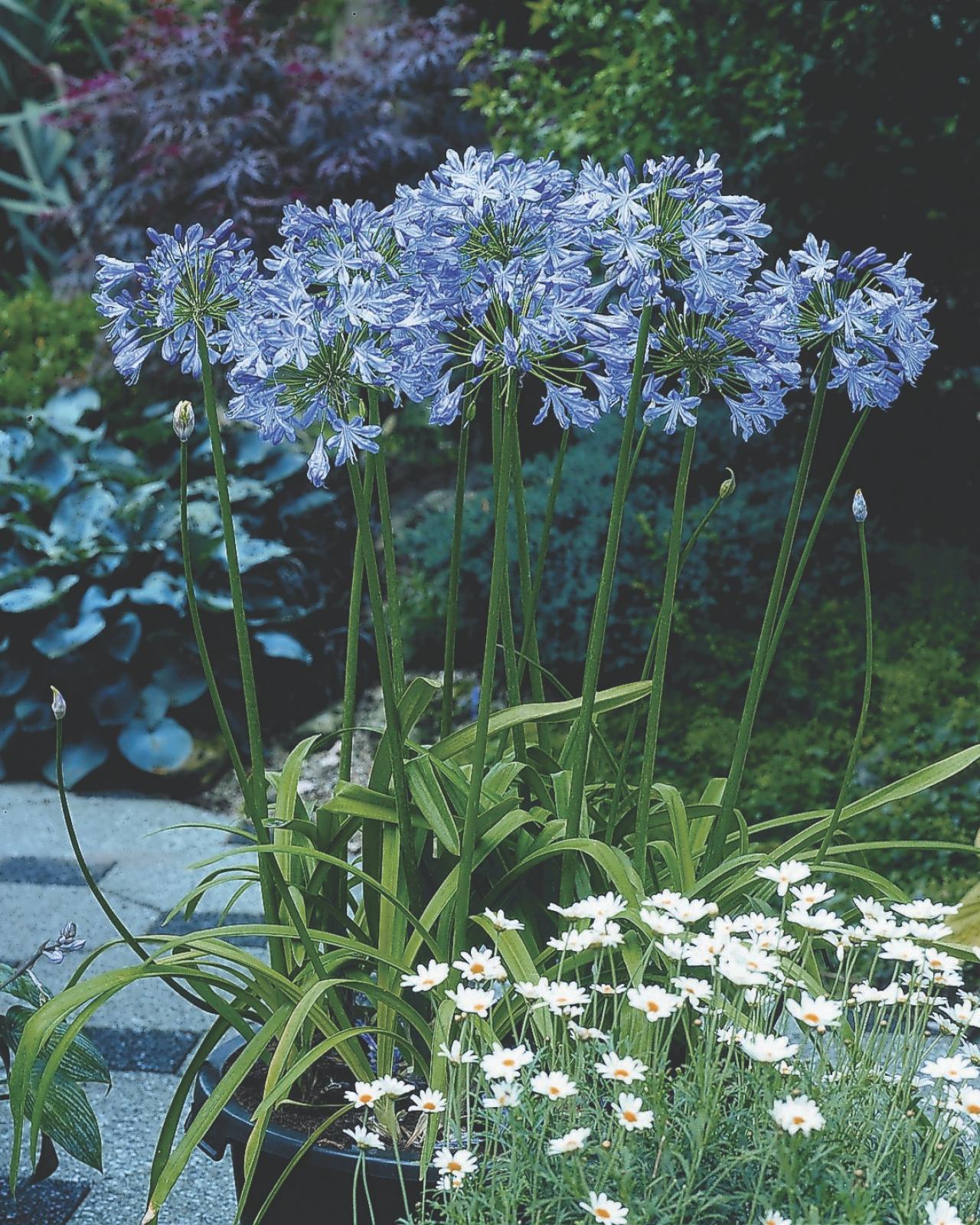Exactly how to Plant and Maintain Agapanthus in Your Yard
Exactly how to Plant and Maintain Agapanthus in Your Yard
Blog Article
Unleashing the Secret to Effective Agapanthus Cultivation: Idea for a Flourishing Garden
In the world of gardening, growing agapanthus successfully requires a calculated technique that incorporates various elements of plant care. By recognizing the nuances of agapanthus growing, one can create a setting where these plants grow and flower abundantly.
Planting Agapanthus: Finest Practices
When growing Agapanthus, correct soil preparation is crucial for guaranteeing effective development and growth of these beautiful flowers. Agapanthus, frequently recognized as Lily of the Nile or African lily, flourishes in well-draining soil with a slightly acidic to neutral pH degree - Agapanthus. Prior to planting, it is critical to modify heavy clay soils with organic matter such as compost or peat moss to enhance drain and supply crucial nutrients for the plants
To plant Agapanthus, choose a location that receives complete sunlight to partial shade, as this will certainly promote healthy development and plentiful flowering. Dig a hole twice the size of the plant's origin sphere and put the Agapanthus at the exact same depth it was previously expanding. Delicately backfill the opening with soil, pushing down securely to remove any kind of air pockets around the origins.
Water the recently planted Agapanthus extensively and remain to maintain the soil evenly moist, specifically throughout the plant's energetic expanding period. Agapanthus. Applying a balanced fertilizer once a month can additionally support the plant's growth and blooming. By complying with these best techniques for planting Agapanthus, you can produce a stunning display of these exciting blossoms in your garden
Perfect Dirt Conditions for Agapanthus
For optimum growth and growing success of Agapanthus plants, guaranteeing the dirt conditions are suitable is essential. Agapanthus favors soil that is abundant in nutrients, so incorporating a balanced plant food throughout the growing period can promote healthy development and lively flowers.

Watering and Fertilizing Tips
To ensure healthy and balanced development and vibrant blooms, correct watering and feeding techniques are necessary for successful Agapanthus growing. Agapanthus plants benefit from normal watering, particularly during the expanding season.
When it pertains to fertilizing Agapanthus, a well balanced fertilizer with equivalent components nitrogen, phosphorus, and potassium can be applied in the spring to advertise healthy growth and flowering. Slow-release plant foods are optimal for providing nutrients progressively over an extensive duration. Prevent over-fertilizing, as this can result in too much foliage development at the cost of blooms.
Additionally, including organic issue like compost right into the soil can improve nutrient levels and improve dirt structure, assisting in the general health of the Agapanthus plants. By adhering to these watering and fertilizing ideas, gardeners can guarantee their Agapanthus plants flourish and generate stunning screens of blossoms.
Pruning and Deadheading Strategies
Appropriate trimming and deadheading techniques play a critical function in maintaining the health and aesthetic appeals of Agapanthus plants, enhancing the essential practices of watering and feeding for successful growing. Trimming Agapanthus involves getting rid of invested blossom heads, dead or yellowing leaves, and overall shaping of the plant to promote much better development. Deadheading, the procedure of removing discolored blossoms, not just boosts the plant's appearance yet likewise encourages additional blooming.
When deadheading Agapanthus, it is recommended to clip off the blossom stem at the base utilizing sharp, tidy shears. This process look at this web-site redirects the plant's energy from seed production back right into origin and foliage growth, advertising a much healthier and more durable plant. Normal deadheading can expand the blooming period of Agapanthus and stop self-seeding, which can cause congestion.
In regards to trimming, Agapanthus generally advantages from a light trim after blooming to tidy up the plant and encourage fresh growth. Reducing the invested flower stems and removing any damaged or dead vegetation helps maintain the plant's vitality and total appearance. However, it is necessary to stay clear of reducing right into the crown of the plant, as this can damage its wellness.

Protecting Agapanthus From Vermins and Diseases
Applying reliable parasite and condition monitoring strategies is essential to securing the health and vigor of Agapanthus plants in cultivation. Agapanthus are normally hardy plants, yet they can still come down with numerous parasites and illness if not properly cared for. One usual parasite that impacts Agapanthus is the Agapanthus borer, a caterpillar that tunnels right into the plant, triggering damages to the blossoms and fallen leaves. To avoid problems, routine assessment of the plants is crucial. If borers are spotted, they can be by hand removed, or insecticidal soap can be made use of as a control procedure.
In enhancement to parasites, Agapanthus are at risk to conditions such as origin rot and fungal fallen leave places. By remaining watchful and attending to parasite and condition concerns promptly, gardeners can aid their Agapanthus review prosper and thrive.

Final Thought
To conclude, successful farming of agapanthus requires correct planting strategies, ideal dirt conditions, ample watering and feeding, normal trimming and deadheading, and protection from parasites and diseases. By complying with these pointers and tricks, gardeners can guarantee a prospering garden loaded with lovely agapanthus blossoms. Agapanthus. Bear in mind to maintain regular care and attention to detail to promote the health and wellness and long life of these spectacular plants
When growing Agapanthus, proper soil preparation is essential for guaranteeing successful development and advancement of these beautiful flowers.Water the recently grown Agapanthus thoroughly and continue to keep the dirt evenly moist, especially during the plant's active growing season.For optimal development and flowering success of Agapanthus plants, making certain the soil conditions are excellent is crucial. When planting or transplanting Agapanthus, guarantee the soil is well-prepared to offer the necessary structure for the plants to establish themselves effectively. One typical parasite that affects Agapanthus is the Agapanthus borer, a caterpillar that passages into the plant, triggering damage site to the blossoms and leaves.
Report this page